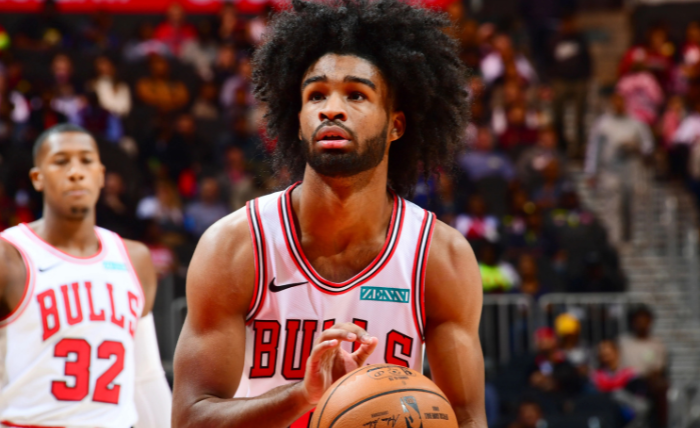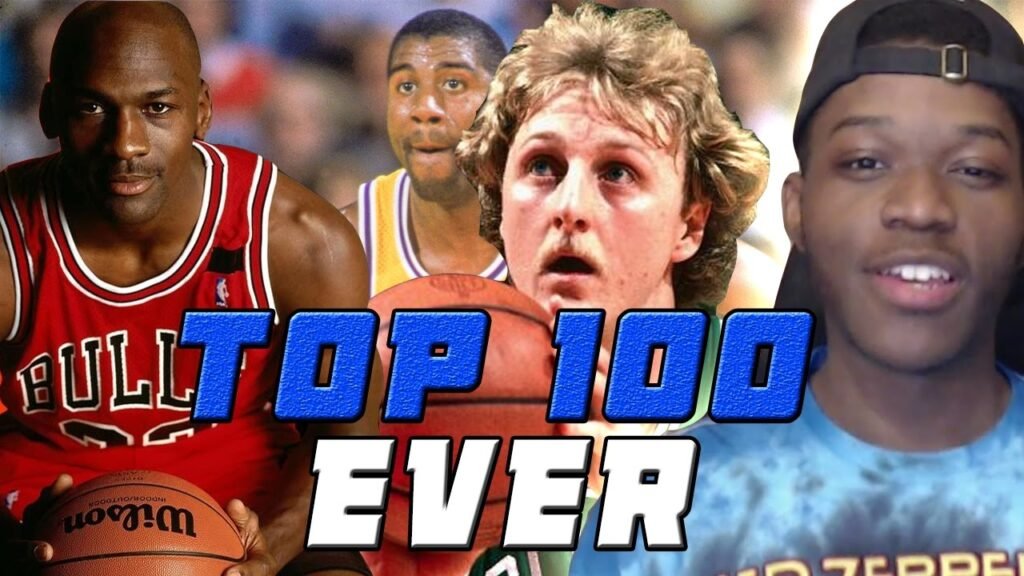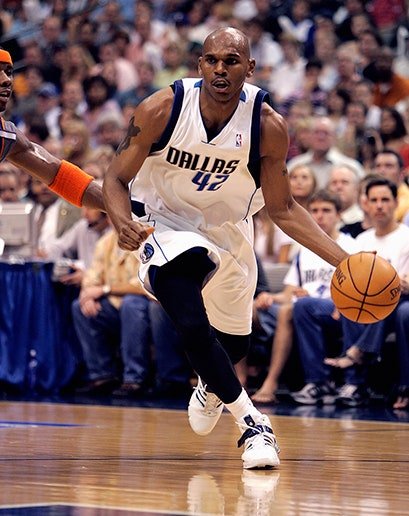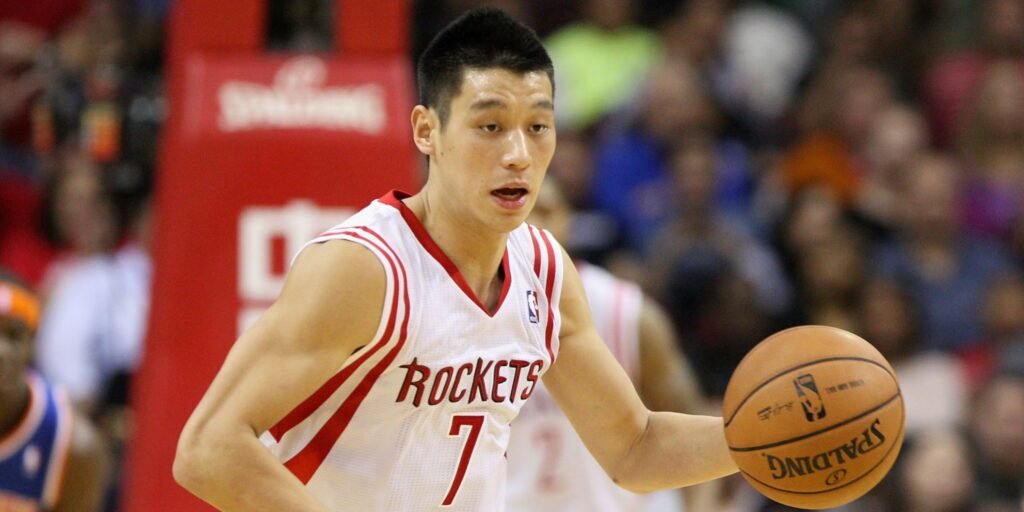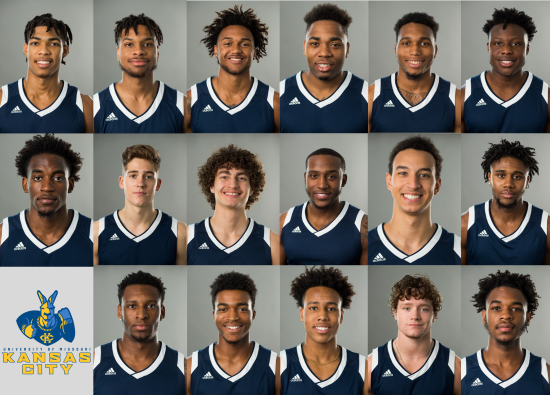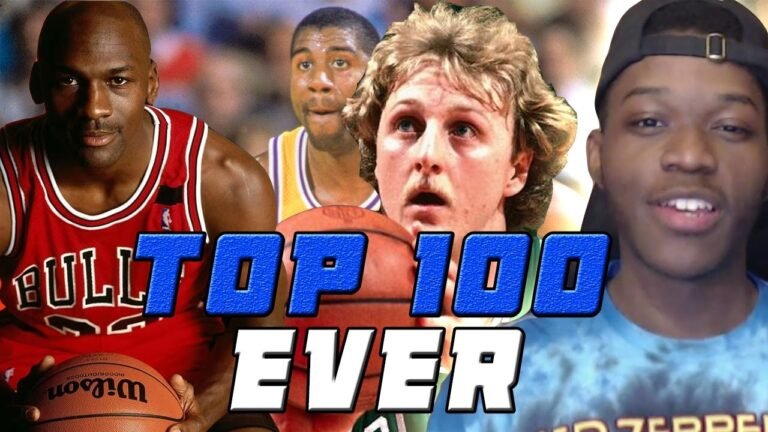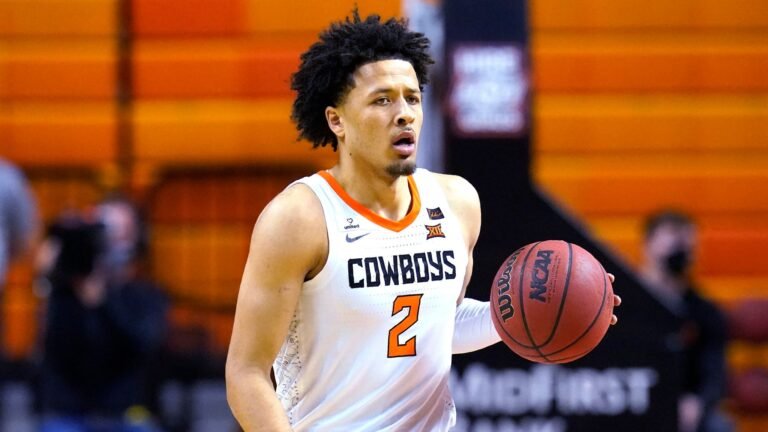NBA Brief: The National Basketball Association
The National Basketball Association (NBA) stands as one of the most prominent and influential sports leagues globally. With its rich history, star-studded rosters, and significant cultural impact, the NBA has transcended the realm of sports to become a global phenomenon. This comprehensive overview delves into the various facets of the NBA, exploring its origins, organizational structure, key teams and players, economic impact, and its role in shaping modern sports culture. Through 15 detailed subheadings, we will unpack the elements that make the NBA a powerhouse in the world of professional basketball.

Introduction to the NBA
The National Basketball Association (NBA) is a professional basketball league in North America, widely regarded as the premier men’s basketball league in the world. Founded in 1946 as the Basketball Association of America (BAA), it merged with the National Basketball League (NBL) in 1949 to form the NBA. Comprising 30 teams—29 in the United States and one in Canada—the NBA showcases top-tier basketball talent and serves as a major entertainment platform with a global fan base.
Historical Evolution of the NBA
Early Years and Formation
The NBA’s origins trace back to 1946 with the establishment of the BAA, which aimed to elevate professional basketball’s status. The merger with the NBL in 1949 marked the birth of the NBA, setting the stage for future growth. Early challenges included financial instability and competition from other leagues, but the NBA gradually gained prominence through strategic expansions and the introduction of star players.
The Rise of Superstars
The 1950s and 1960s saw the emergence of legendary players like Bill Russell, Wilt Chamberlain, and Jerry West, whose on-court prowess and off-court charisma helped popularize the league. The 1970s and 1980s further elevated the NBA’s profile with icons such as Magic Johnson, Larry Bird, and Michael Jordan, whose rivalries and championships captivated audiences worldwide.
Modern Era and Global Expansion
The NBA experienced significant growth in the 1990s and 2000s, expanding its global footprint through international broadcasting, marketing, and the influx of international players. The formation of the WNBA, NBA G League, and other developmental platforms reinforced the league’s commitment to diversity and talent cultivation. Recent decades have focused on enhancing the fan experience, embracing digital media, and addressing social issues, solidifying the NBA’s status as a leading sports league.
Organizational Structure and Governance
League Structure
The NBA operates as a single entity, with the league owning all team assets and managing collective matters such as player contracts, revenue sharing, and scheduling. This structure ensures uniformity and stability across the league, promoting competitive balance and financial health.
Ownership and Management
Each of the 30 teams is owned by individual franchises, with ownership groups responsible for team operations, local marketing, and community engagement. The NBA Board of Governors comprises team owners who make key decisions regarding league policies, rule changes, and collective bargaining agreements.
Key Governing Bodies
Commissioner’s Office: Led by the NBA Commissioner, currently Adam Silver, the office oversees day-to-day operations, enforces league rules, and represents the NBA in public and private matters.
NBA Players Association (NBPA): The union representing NBA players, negotiating collective bargaining agreements, player rights, and working conditions.
NBA Competition Committee: Responsible for proposing and implementing rule changes, scheduling formats, and ensuring the integrity of the game.
The NBA Season: Structure and Format
Preseason
The NBA preseason consists of exhibition games that allow teams to test strategies, evaluate new players, and prepare for the regular season. While not officially part of the competitive standings, preseason games are crucial for team development.
Regular Season
The regular NBA season typically spans from October to April, with each of the 30 teams playing 82 games (41 home and 41 away). The schedule is designed to ensure fairness, with balanced matchups and consideration of travel logistics. Performance during the regular season determines playoff seeding and qualification.
Playoffs
Following the regular season, the top eight teams from each conference (Eastern and Western) enter the playoffs, a knockout tournament culminating in the NBA Finals. The playoffs follow a best-of-seven series format, with the first team to win four games advancing to the next round. The Finals determine the league champion for the season.
Offseason
The offseason includes key activities such as the NBA Draft, free agency, trades, and training camps. Teams utilize this period to rebuild, retool, and strategize for the upcoming season, addressing roster needs and enhancing team dynamics.
Key NBA Teams and Franchises
Los Angeles Lakers
One of the most successful and popular franchises, the Lakers boast numerous championships and a roster filled with superstar talent, both past and present.
Boston Celtics
With a storied history and numerous championships, the Celtics are renowned for their consistent excellence and legendary players like Bill Russell and Larry Bird.
Chicago Bulls
Famed for the Michael Jordan era, the Bulls remain an iconic brand with a passionate global fan base and a legacy of success in the 1990s.
Golden State Warriors
A modern powerhouse, the Warriors have achieved significant success in recent years with a roster featuring stars like Stephen Curry and Klay Thompson.
Miami Heat
Known for their competitive spirit and multiple championships, the Heat have a strong presence in the league, driven by star players and strategic management.
New York Knicks
One of the league’s most historic franchises, the Knicks are based in the basketball capital of the world, New York City, with a dedicated and vocal fan base.
San Antonio Spurs
Celebrated for their consistent performance and championship wins, the Spurs exemplify organizational excellence and player development.
Toronto Raptors
As the sole Canadian NBA team, the Raptors have made a significant impact, highlighted by their 2019 championship win and global outreach.
Houston Rockets
With a history of star players and competitive teams, the Rockets continue to be a significant presence in the Western Conference.
Philadelphia 76ers
Known for their passionate fan base and strong organizational culture, the 76ers have a rich history and continue to strive for championships.
Legendary NBA Players

Michael Jordan
Often regarded as the greatest basketball player of all time, Jordan’s impact on the game, culture, and global reach of the NBA is unparalleled.
Magic Johnson
A versatile and charismatic point guard, Magic revolutionized the position and led the Lakers to multiple championships during the “Showtime” era.
Larry Bird
A fierce competitor and exceptional shooter, Bird’s rivalry with Magic Johnson defined the NBA in the 1980s and elevated the league’s popularity.
Kareem Abdul-Jabbar
The NBA’s all-time leading scorer, Abdul-Jabbar’s longevity, skill, and signature skyhook shot left a lasting legacy.
Bill Russell
With 11 championships, Russell’s defensive prowess and leadership with the Boston Celtics set the standard for winning and team dynamics.
Shaquille O’Neal
Dominant in the paint, Shaq’s combination of size, strength, and personality made him one of the most influential centers in NBA history.
Kobe Bryant
Known for his relentless work ethic and scoring ability, Kobe’s 20-year career with the Lakers left an indelible mark on the game.
Tim Duncan
The cornerstone of the Spurs’ dynasty, Duncan’s fundamental play and leadership exemplified consistency and excellence.
Wilt Chamberlain
A statistical marvel, Chamberlain’s records and dominant performances remain benchmarks in the NBA.
Hakeem Olajuwon
Renowned for his defensive skills and footwork, Olajuwon is considered one of the greatest centers in NBA history.
Current Stars and Rising Talent
LeBron James
A transcendent talent, LeBron continues to redefine longevity and versatility in the NBA, consistently performing at an elite level.
Kevin Durant
One of the most prolific scorers, Durant’s skill set and adaptability make him a constant threat on the court.
Stephen Curry
Revolutionizing the game with his shooting prowess, Curry’s influence extends beyond statistics to strategic aspects of basketball.
Giannis Antetokounmpo
Known as the “Greek Freak,” Giannis’s athleticism and versatility have made him a dominant force and a two-time MVP.
Luka Dončić
A young phenom, Dončić’s exceptional playmaking and scoring ability have quickly elevated him to superstar status.
Nikola Jokić
The versatile center, Jokić’s unique skill set and basketball IQ have made him a standout player and MVP recipient.
Ja Morant
With explosive athleticism and dynamic play, Morant is emerging as one of the most exciting young talents in the league.
Joel Embiid
A dominant center with a strong offensive and defensive game, Embiid is a cornerstone for the Philadelphia 76ers.
Zion Williamson
Known for his incredible athleticism and scoring ability, Williamson is poised to become a major star in the NBA.
Devin Booker
A prolific scorer and leader for the Phoenix Suns, Booker’s offensive skills have made him a key player to watch.
The NBA Draft and Player Development
The NBA Draft Process
The NBA Draft is an annual event where teams select eligible players to join the league. Comprising two rounds, the draft features prospects from college basketball, international leagues, and other developmental programs. The draft order is determined by a combination of team records and a lottery system for non-playoff teams, aiming to maintain competitive balance.
Scouting and Talent Evaluation
NBA teams invest heavily in scouting to identify and evaluate talent from high school, college, and international levels. Advanced analytics, physical assessments, and psychological evaluations are integral to selecting players who fit team needs and organizational philosophies.
Player Development Programs
Once drafted, players enter development programs designed to hone their skills, adapt to the professional level, and integrate into team systems. The NBA G League serves as a primary platform for player development, providing game experience and personalized training.
International Recruitment
The NBA increasingly recruits international players, recognizing the global talent pool. This diversification enriches the league’s talent base and expands its global reach, fostering a multicultural and dynamic playing environment.
Impact of the Draft on Team Success
Effective drafting is crucial for team success, enabling franchises to build competitive rosters, sustain long-term performance, and adapt to evolving game styles. High draft picks can transform teams, while strategic selections contribute to depth and versatility.
NBA Championships and Playoffs
Playoff Structure
The NBA playoffs follow a bracket format, with the top eight teams from each conference competing in a series of best-of-seven matchups. The progression from the First Round to the Conference Finals culminates in the NBA Finals, where the Eastern and Western Conference champions vie for the championship title.
Historical Champions
The Boston Celtics and Los Angeles Lakers hold the most NBA championships, each with a storied history of success and legendary players. Other teams like the Chicago Bulls, Golden State Warriors, and San Antonio Spurs have also made significant championship runs, contributing to the league’s competitive landscape.
Notable Playoff Moments
The NBA playoffs are renowned for dramatic moments, clutch performances, and historic rivalries. Memorable instances include Michael Jordan’s “Flu Game,” LeBron James’s game-winning shots, and the Warriors’ record-breaking playoff runs, which enhance the league’s allure and narrative.
Impact on Player Legacies
Performance in the playoffs significantly influences player legacies, with championship titles and playoff heroics cementing reputations. Players often define their careers through their contributions in high-stakes postseason scenarios.
Financial and Cultural Significance
NBA championships generate substantial revenue through ticket sales, merchandise, and broadcasting rights. Culturally, winning teams and players become icons, influencing fashion, media, and global sports culture.
Economic Impact of the NBA
Revenue Streams
The NBA’s revenue is derived from various sources, including ticket sales, broadcasting rights, sponsorships, merchandise, and licensing agreements. Global expansion has opened additional revenue channels, particularly through international markets and digital platforms.
Player Salaries and Contracts
NBA players are among the highest-paid athletes, with contracts negotiated through collective bargaining agreements. Salary caps and luxury taxes regulate spending, ensuring competitive balance and financial sustainability.
Team Valuations
NBA team valuations have soared, driven by revenue growth, brand strength, and market size. Franchises in major cities like New York, Los Angeles, and Chicago command the highest valuations, reflecting their economic and cultural significance.
Economic Contributions to Host Cities
NBA teams contribute significantly to local economies through job creation, tourism, and infrastructure development. Home games stimulate spending in surrounding businesses, including restaurants, hotels, and retail establishments.
Impact of Free Agency and Trades
Free agency and trades influence team dynamics, competitive balance, and market strategies. High-profile player movements generate media attention, fan engagement, and financial implications for teams and the league.
Global Influence and International Expansion
International Player Representation
The NBA features a diverse roster of international players, enhancing the league’s global appeal and fostering cross-cultural connections. Players from countries like Spain, France, Australia, and Nigeria have made significant impacts, expanding the NBA’s talent pool.
Global Broadcasting and Media Rights
The NBA broadcasts games in over 200 countries and territories, translating content into multiple languages to reach a worldwide audience. Strategic media partnerships and digital streaming platforms have facilitated the league’s international growth.
NBA Global Games
The NBA hosts regular-season games and exhibition matches abroad, including in countries like China, Mexico, and the United Kingdom. These global games promote the league, engage international fans, and open new markets for merchandise and sponsorships.
Basketball Academies and Development Programs
The NBA invests in basketball academies and development programs worldwide, nurturing young talent and promoting the sport’s growth. Initiatives like the NBA Academy provide training, education, and resources to aspiring players from diverse backgrounds.
Cultural Exchange and Influence
The NBA serves as a platform for cultural exchange, showcasing diverse playing styles, traditions, and fan cultures. This global interaction enriches the league’s identity and fosters a more inclusive and multifaceted sports environment.
NBA Media and Broadcasting
Traditional Broadcasting Partnerships
The NBA has established long-term broadcasting deals with major networks like ESPN, ABC, TNT, and NBA TV. These partnerships ensure widespread coverage of games, highlights, and analysis, reaching millions of viewers domestically and internationally.
Digital and Streaming Platforms
Embracing digital transformation, the NBA leverages streaming platforms such as NBA League Pass, social media, and mobile applications to deliver content directly to fans. These digital channels provide real-time updates, interactive features, and personalized viewing experiences.
Social Media and Fan Engagement
The NBA actively engages with fans through social media platforms like Twitter, Instagram, TikTok, and YouTube. These channels facilitate direct interaction, viral content sharing, and community building, enhancing fan loyalty and participation.
Highlight Shows and Analysis Programs
Dedicated highlight shows, analysis programs, and sports journalism contribute to the NBA’s media ecosystem. Programs like “NBA Tonight” and “Inside the NBA” offer in-depth coverage, expert commentary, and entertainment, enriching the fan experience.
Influence of Celebrity and Pop Culture
The NBA’s integration with celebrity culture and pop media amplifies its visibility and appeal. Collaborations with musicians, actors, and influencers create crossover content, expanding the league’s reach beyond traditional sports audiences.
Community Engagement and Social Responsibility
NBA Cares
NBA Cares is the league’s global social responsibility initiative, focusing on education, youth development, health, and community outreach. Through partnerships with non-profits and grassroots organizations, NBA Cares addresses critical social issues and promotes positive change.
Player Philanthropy and Activism
NBA players are actively involved in philanthropy and activism, leveraging their platforms to advocate for social justice, education, and community support. Initiatives like LeBron James’s I PROMISE School exemplify the league’s commitment to societal impact.
Community Programs and Events
Teams host various community programs and events, including youth clinics, charity fundraisers, and local outreach projects. These efforts strengthen community ties, inspire future generations, and enhance the league’s local presence.
Environmental Sustainability
The NBA promotes environmental sustainability through initiatives aimed at reducing the league’s carbon footprint, promoting recycling, and encouraging sustainable practices within arenas and operations. Teams implement green policies and support eco-friendly projects to contribute to global environmental goals.
Health and Wellness Initiatives
Focusing on health and wellness, the NBA provides resources for mental health support, injury prevention, and overall well-being for players and communities. Programs addressing these areas ensure a holistic approach to athlete and fan health.
Innovations and Technological Advancements in the NBA

Advanced Analytics and Data Science
The NBA utilizes advanced analytics and data science to enhance player performance, team strategies, and fan engagement. Metrics like player efficiency rating (PER), shot charts, and predictive modeling inform decision-making and competitive strategies.
Virtual and Augmented Reality
Virtual and augmented reality technologies are integrated into the NBA experience, offering immersive viewing options, virtual courtside seats, and interactive fan experiences. These innovations bridge the gap between digital and physical engagement.
Smart Arenas and Fan Experience
Modern NBA arenas incorporate smart technologies, including high-speed Wi-Fi, mobile ticketing, and interactive displays, to enhance the fan experience. These features provide convenience, personalization, and connectivity for attendees.
Esports and Gaming Integration
The NBA has embraced esports and gaming, partnering with organizations to host virtual basketball competitions and creating NBA-themed video games. This integration attracts younger audiences and diversifies the league’s entertainment offerings.
Player Performance and Health Technologies
Technological advancements in player performance and health, such as wearable devices, biometric monitoring, and AI-driven training programs, contribute to player development, injury prevention, and optimized performance.
Future Prospects of the NBA
Continued Global Expansion
The NBA aims to further expand its global presence through strategic partnerships, international games, and localized content, ensuring sustained growth and fan engagement worldwide.
Embracing Sustainability
Future initiatives will likely focus on enhancing sustainability efforts, promoting eco-friendly practices, and addressing climate-related challenges within league operations and community programs.
Enhancing Fan Engagement
Innovative technologies and personalized content will continue to evolve, providing fans with more interactive and immersive experiences, thereby strengthening loyalty and participation.
Evolving Competitive Landscape
As the league evolves, changes in team dynamics, player development, and competitive strategies will shape the NBA’s future, maintaining its position as a leading sports league.
Addressing Social Issues
The NBA will continue to play a pivotal role in addressing social issues, leveraging its influence to promote equity, justice, and positive societal change.
Technological Integration
Ongoing advancements in technology will further integrate into the NBA, enhancing gameplay, broadcasting, and operational efficiency, keeping the league at the forefront of innovation.
Expanding Women’s Basketball
Collaboration with the WNBA and supporting women’s basketball initiatives will foster greater gender diversity and inclusion within the broader basketball ecosystem.
Enhancing Diversity and Inclusion
Continued efforts to promote diversity and inclusion among players, staff, and leadership will ensure the NBA remains a progressive and representative organization.
Adapting to Changing Media Landscapes
The NBA will adapt to evolving media consumption trends, leveraging new platforms and formats to reach diverse and global audiences effectively.
Long-term Sustainability and Growth
Strategic planning and visionary leadership will guide the NBA towards sustainable growth, ensuring its legacy and influence endure for future generations.
Frequently Asked Questions (FAQs)
What is the NBA?
The NBA, or National Basketball Association, is a professional men’s basketball league in North America, widely regarded as the premier basketball league in the world. It comprises 30 teams, with players from around the globe competing in a regular season, playoffs, and ultimately the NBA Finals to determine the champion.
How many teams are in the NBA?
The NBA consists of 30 teams, with 29 located in the United States and one in Canada (the Toronto Raptors). These teams are divided into two conferences: the Eastern Conference and the Western Conference, each containing 15 teams.
How is the NBA season structured?
The NBA season is divided into several phases:
- Preseason: Exhibition games to prepare teams.
- Regular Season: Each team plays 82 games, balancing home and away matches.
- Playoffs: The top eight teams from each conference compete in a knockout tournament.
- NBA Finals: The Eastern and Western Conference champions face off in a best-of-seven series to determine the league champion.
- Offseason: Activities include the NBA Draft, trades, and free agency.
Who are some of the most famous NBA players?
Some of the most legendary NBA players include Michael Jordan, Magic Johnson, Larry Bird, Kareem Abdul-Jabbar, and Bill Russell. Current stars include LeBron James, Kevin Durant, Stephen Curry, Giannis Antetokounmpo, and Luka Dončić, among others.
How does the NBA impact the global sports landscape?
The NBA has a significant global influence through its international player base, global broadcasting, and marketing efforts. It promotes basketball worldwide, engages with international fans through global games and digital platforms, and fosters cultural exchange, making it a major player in the global sports industry.


